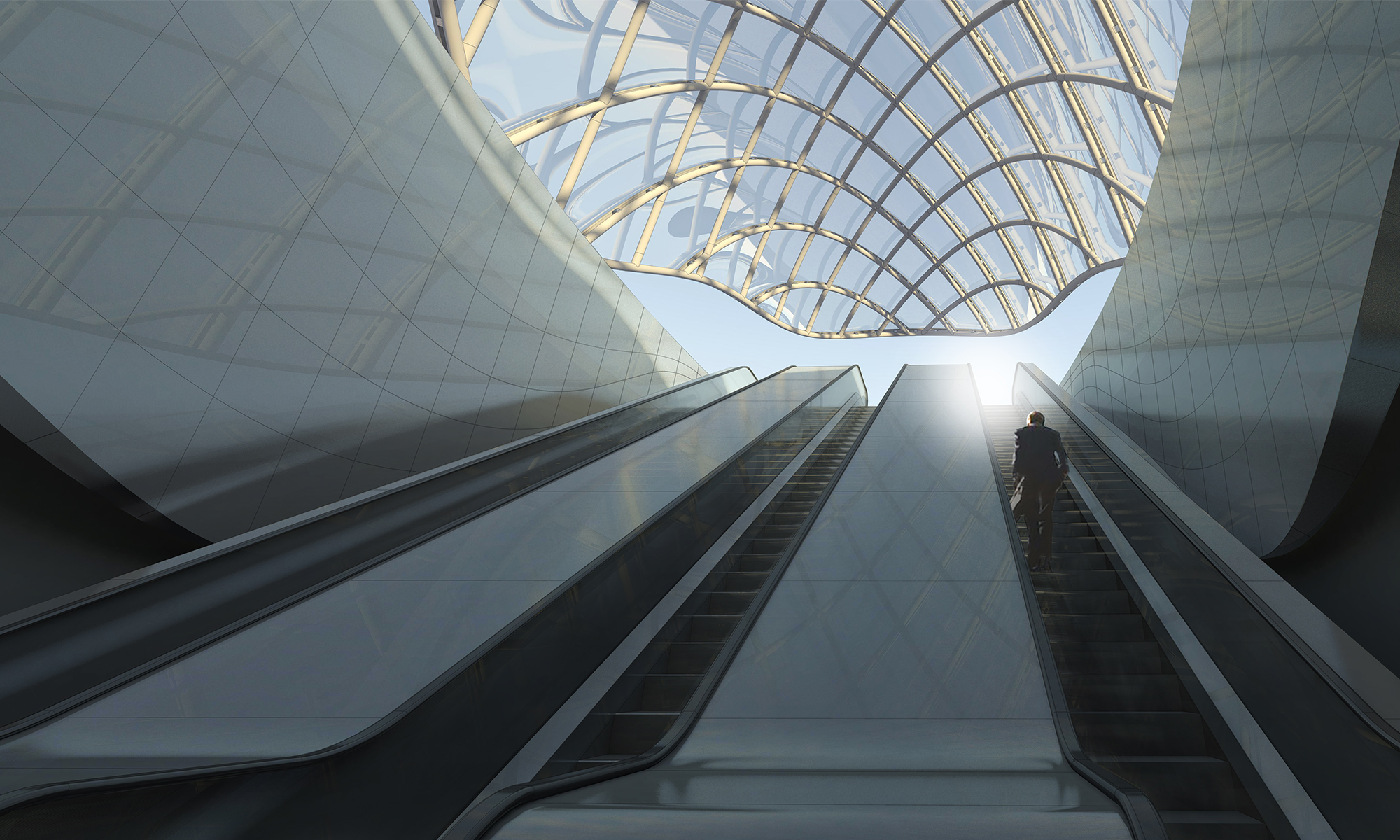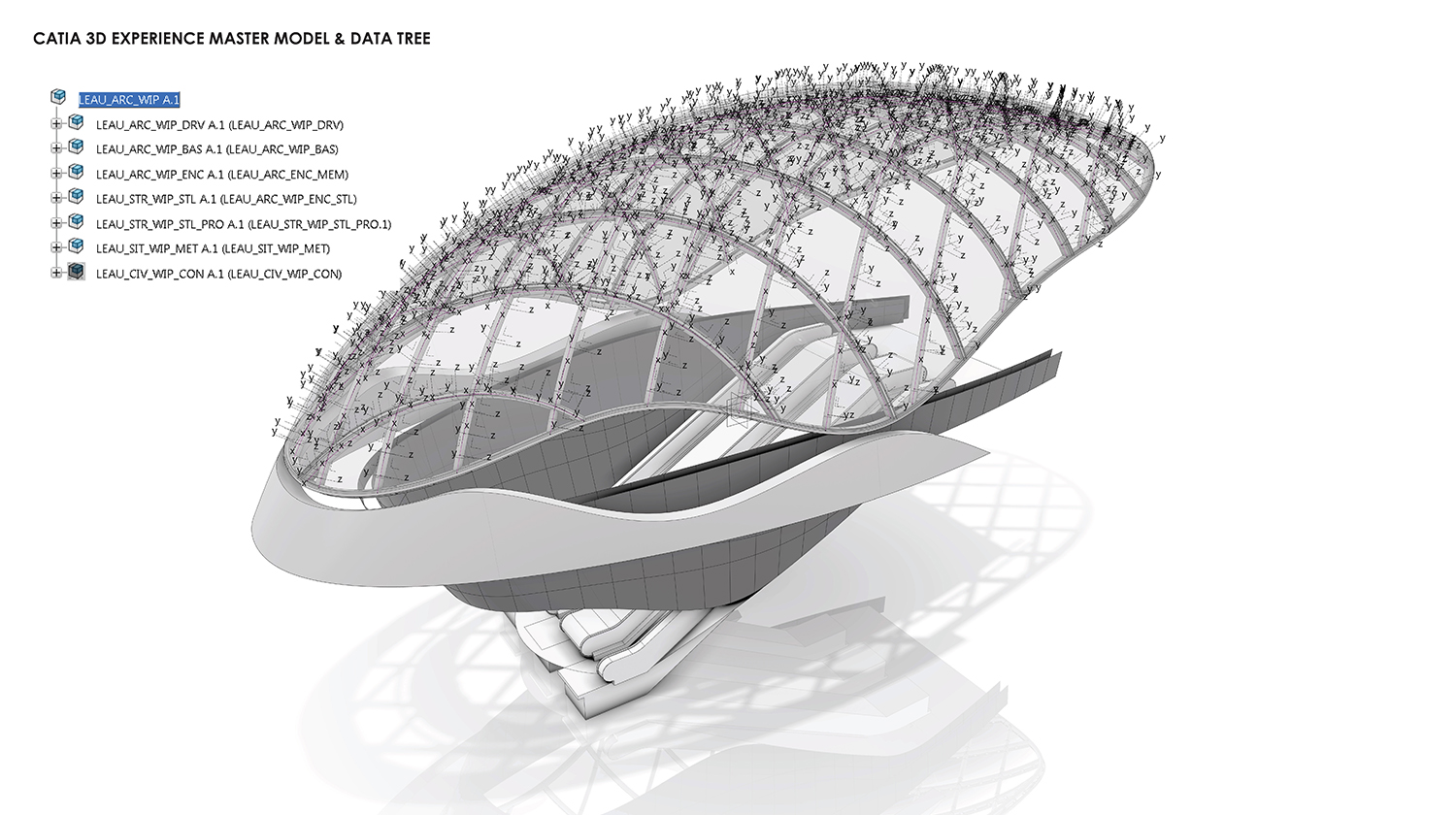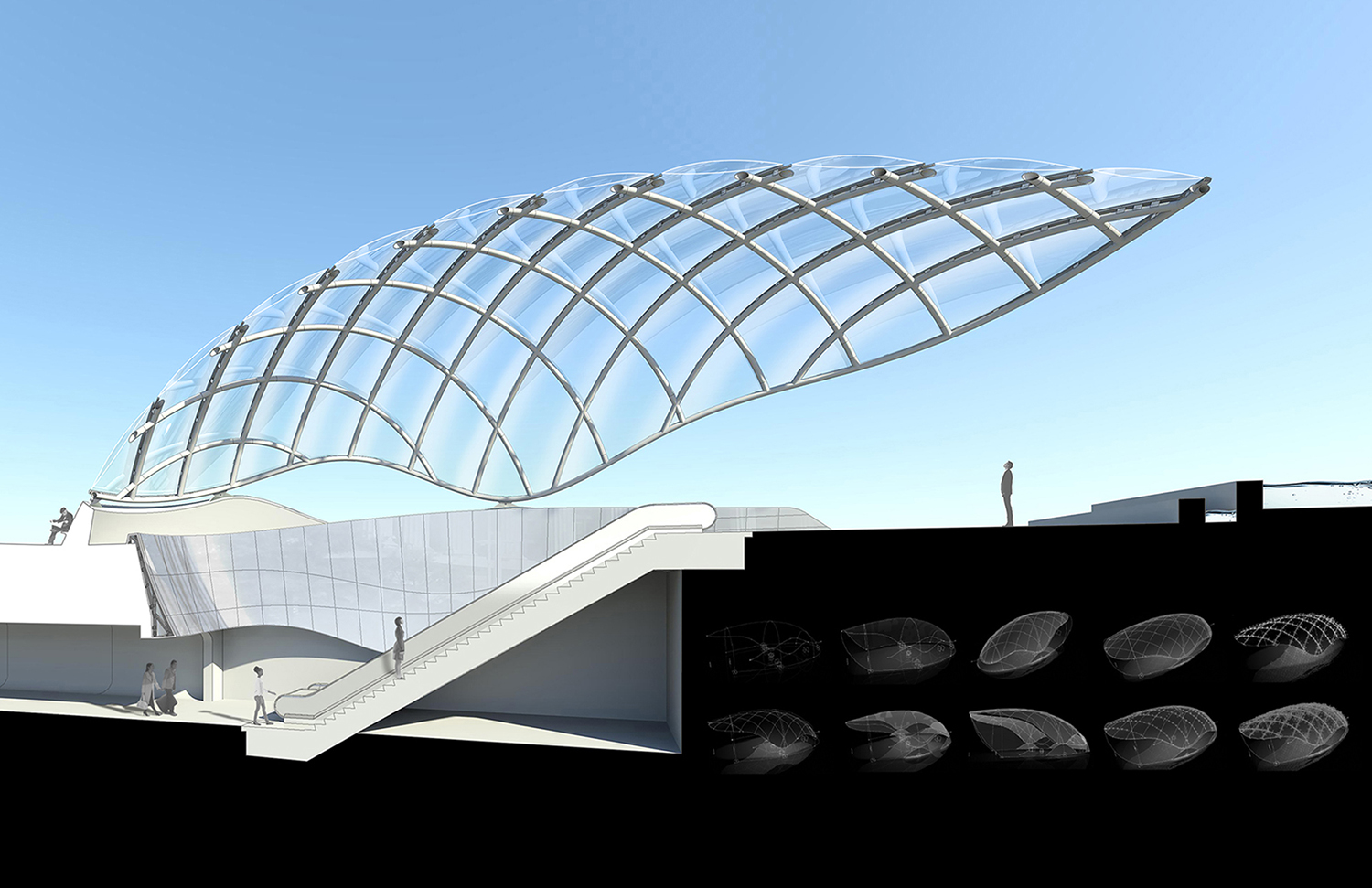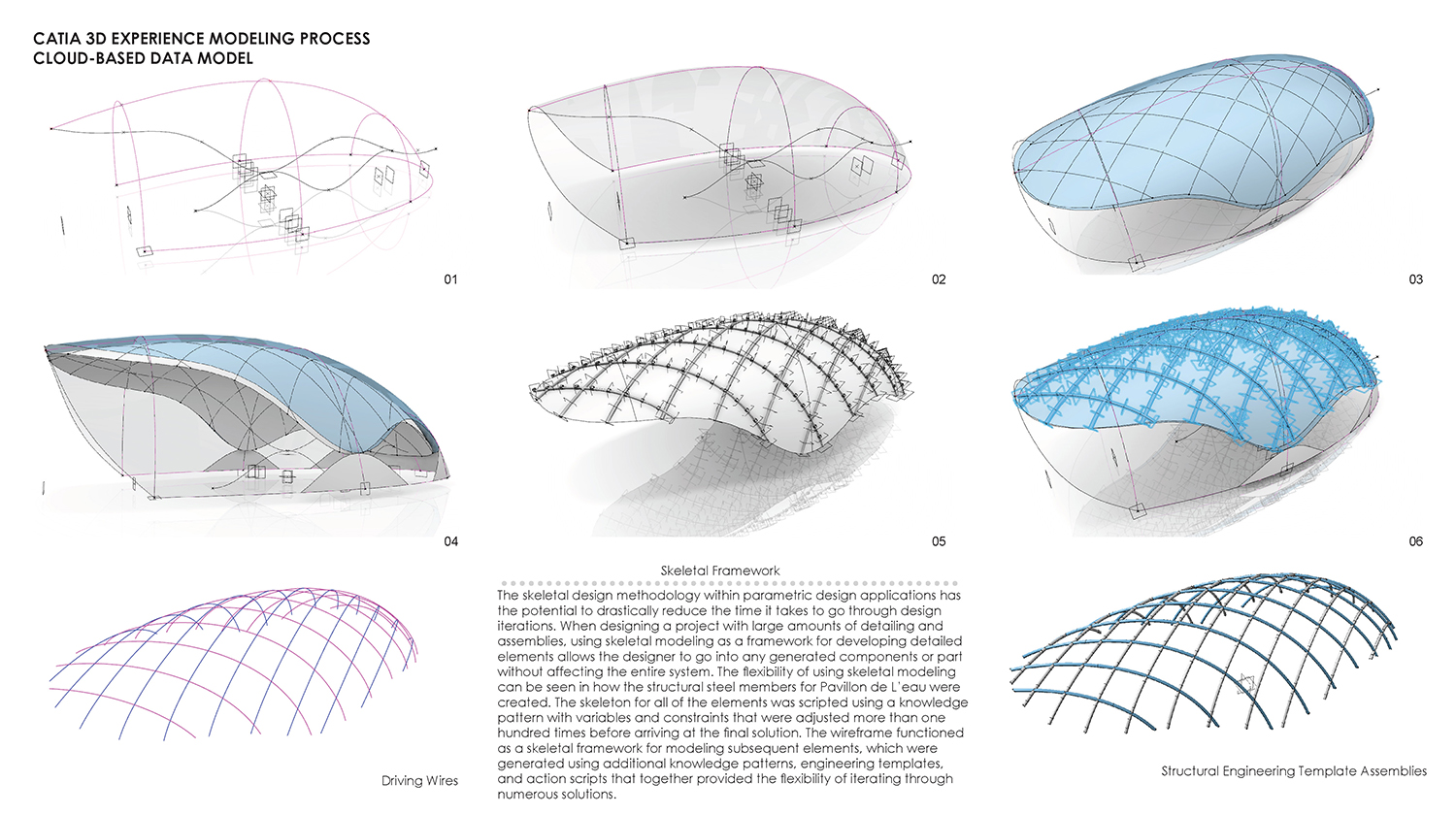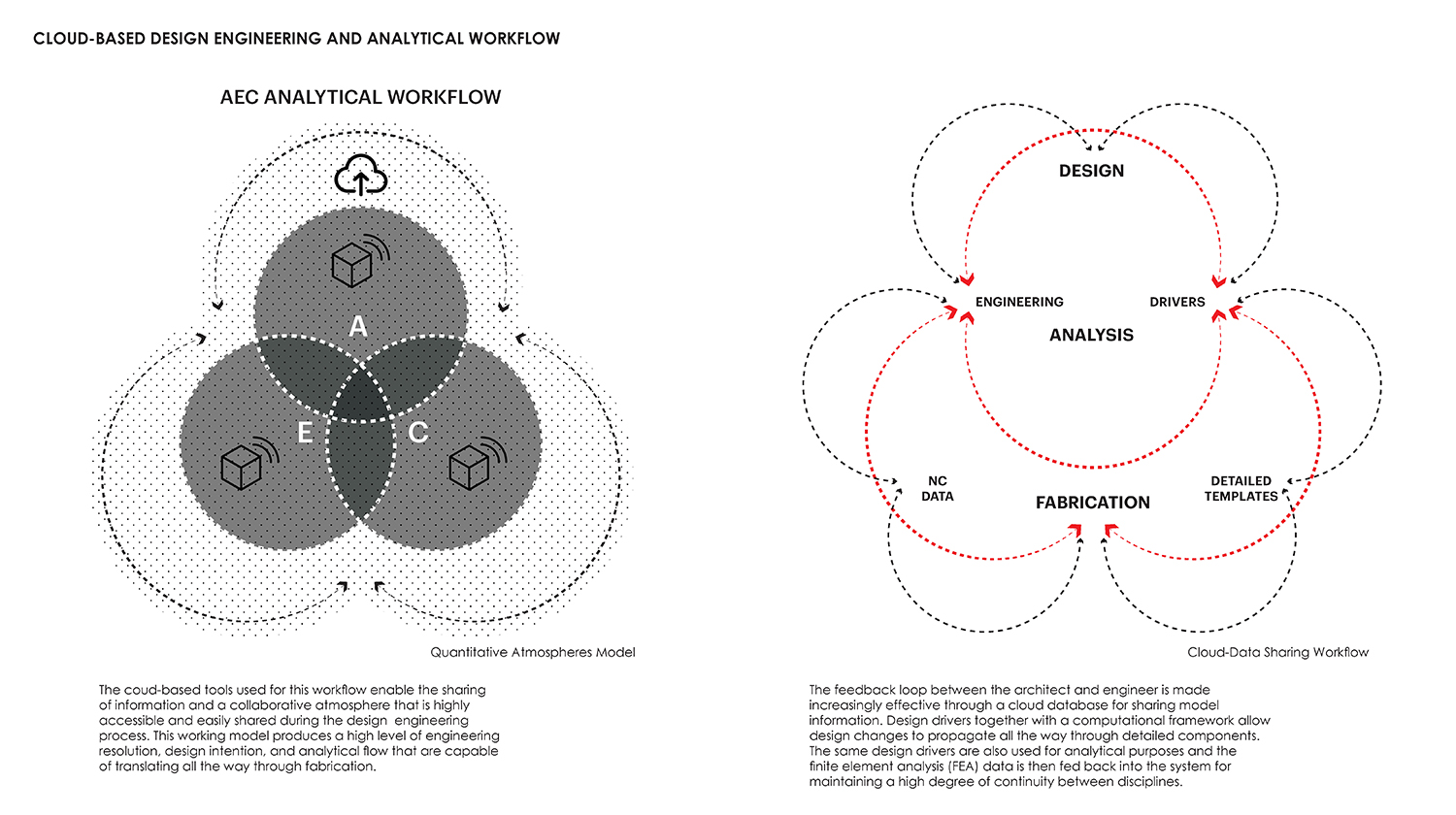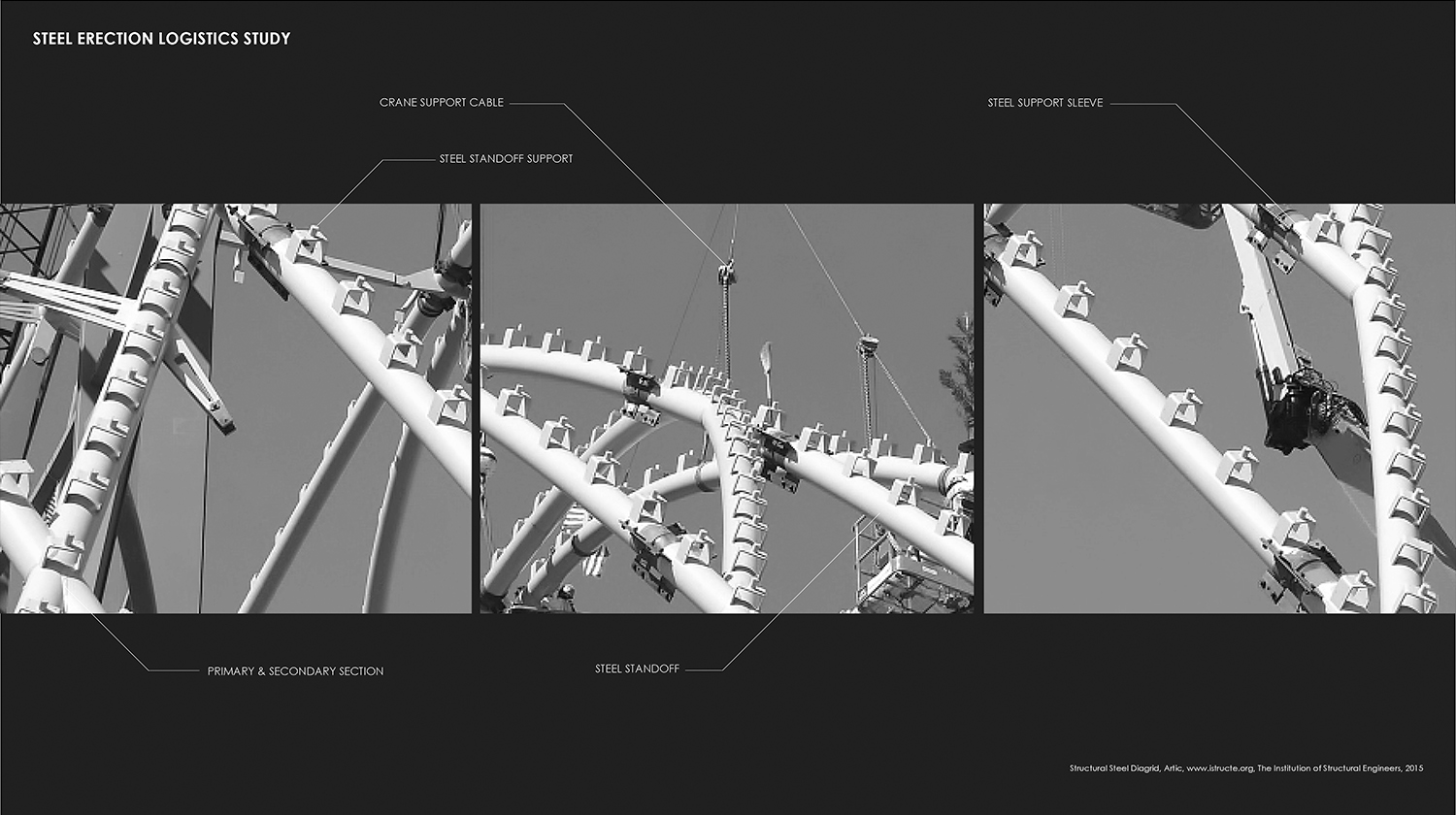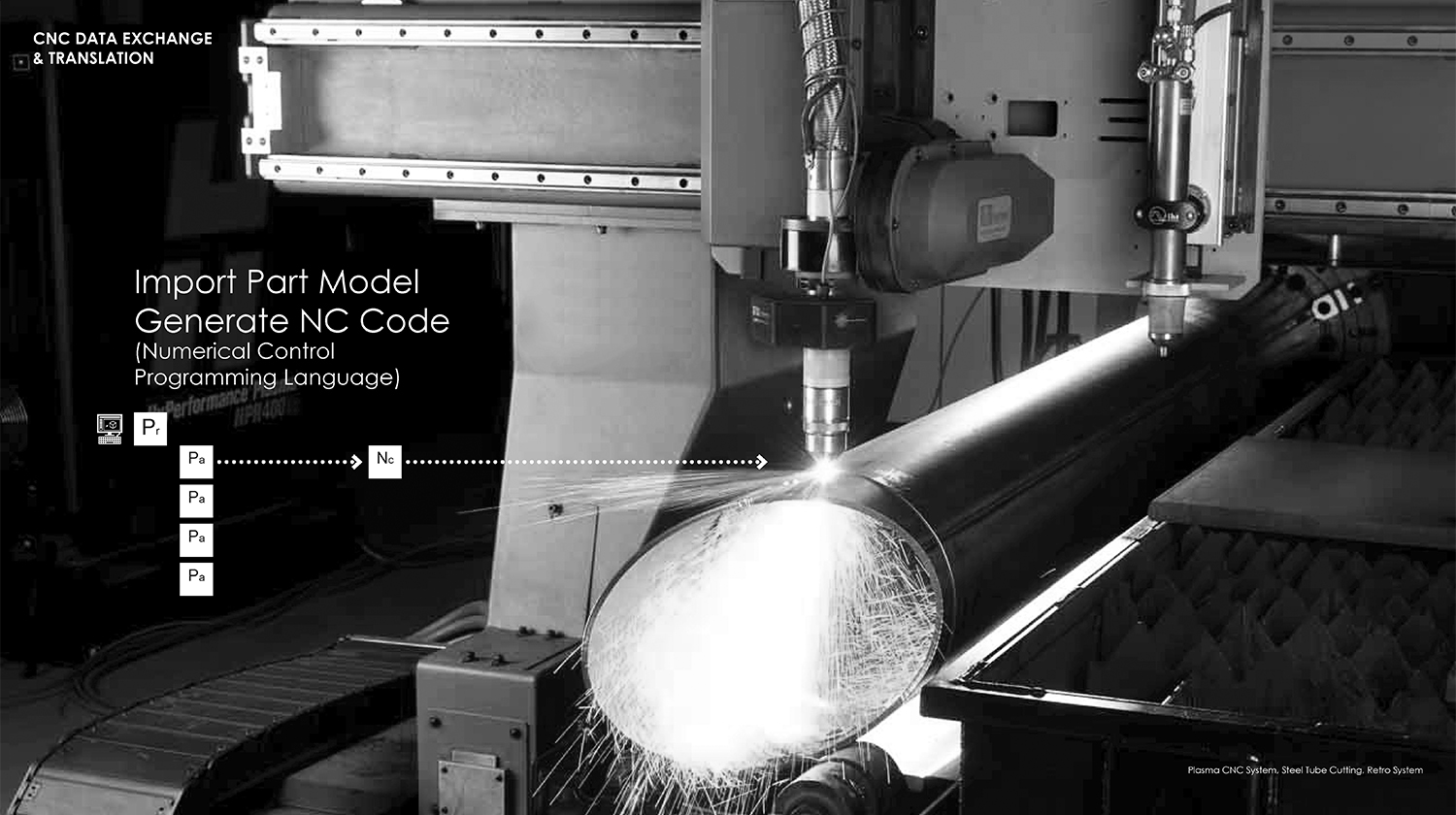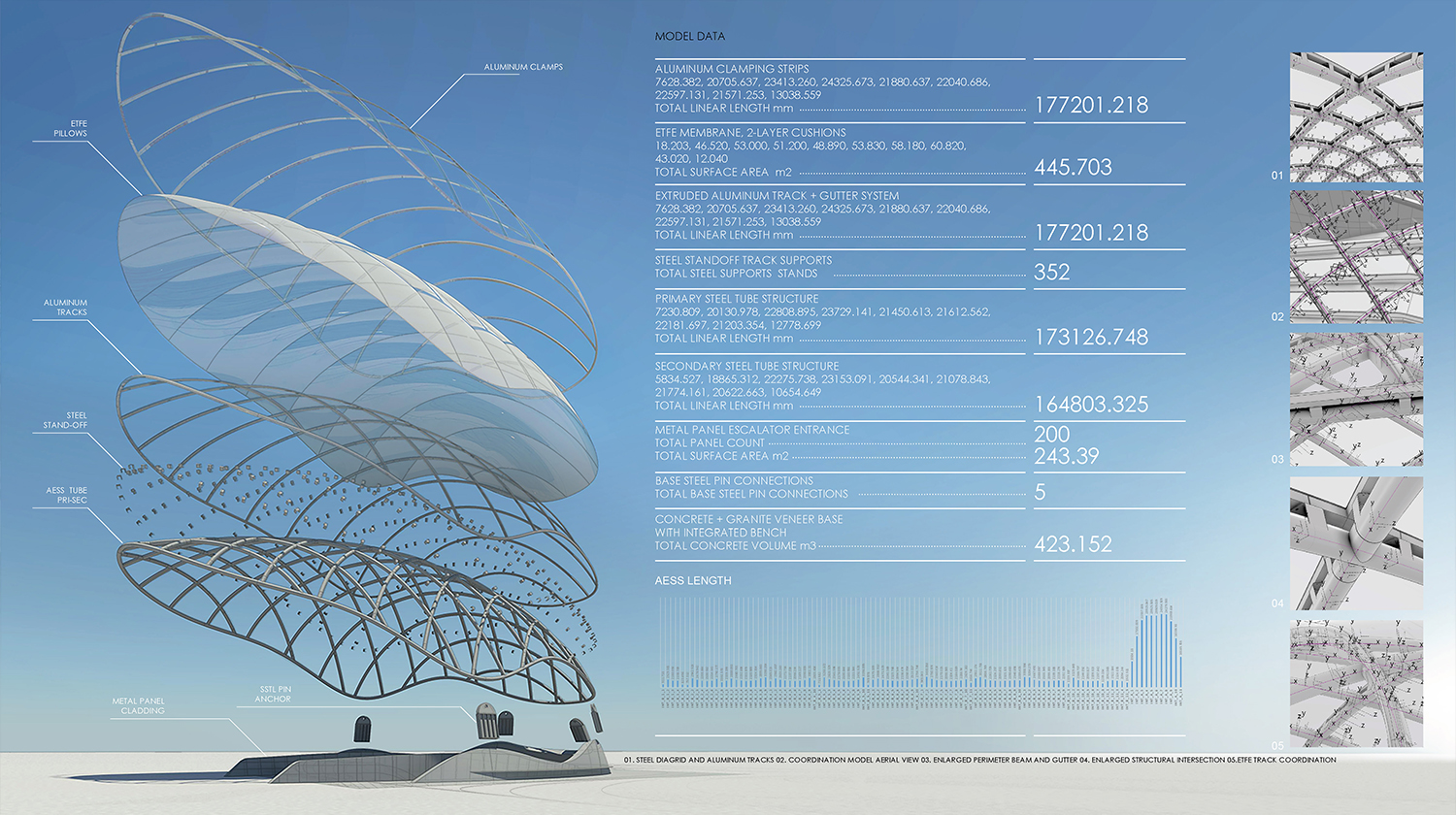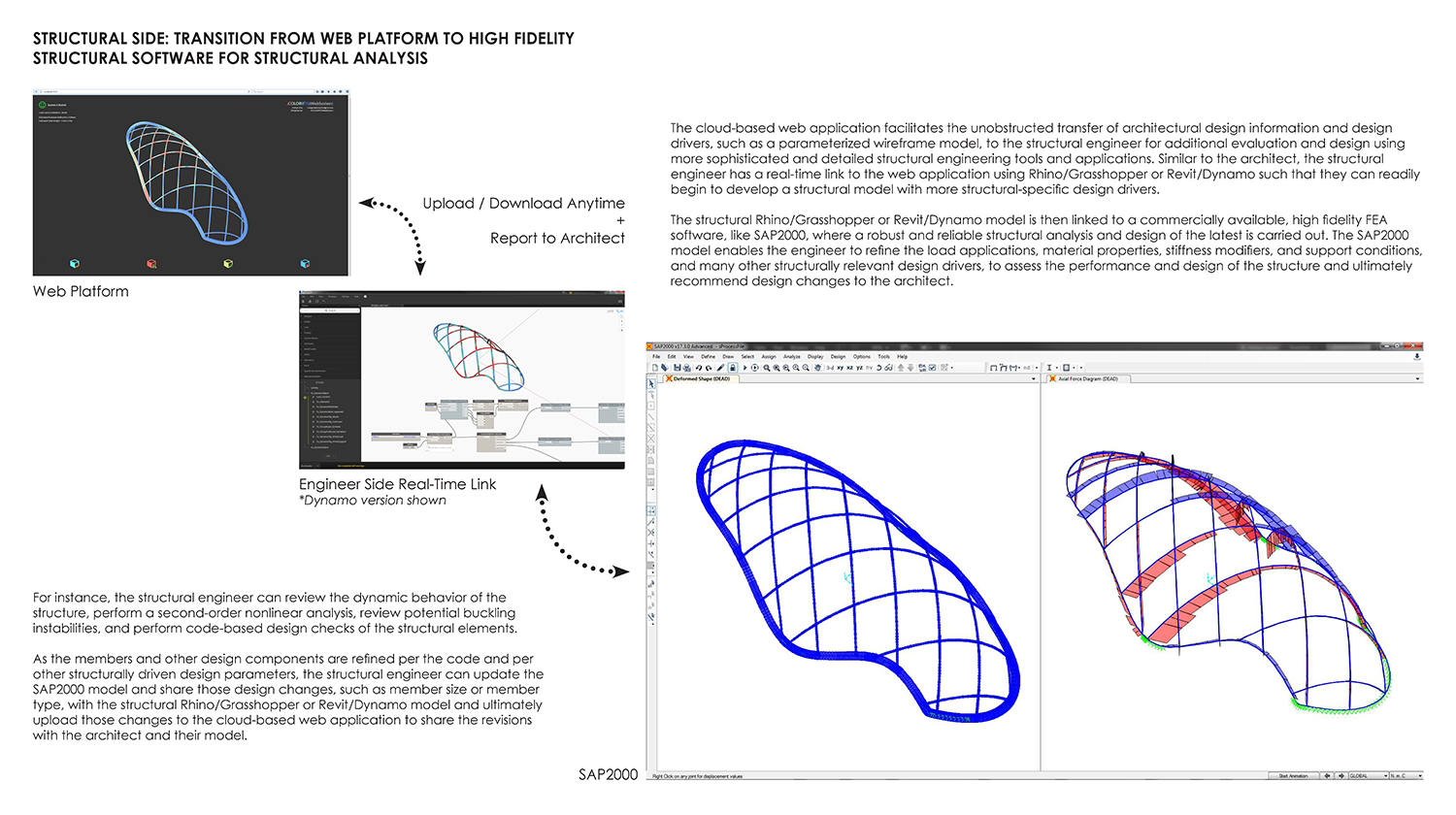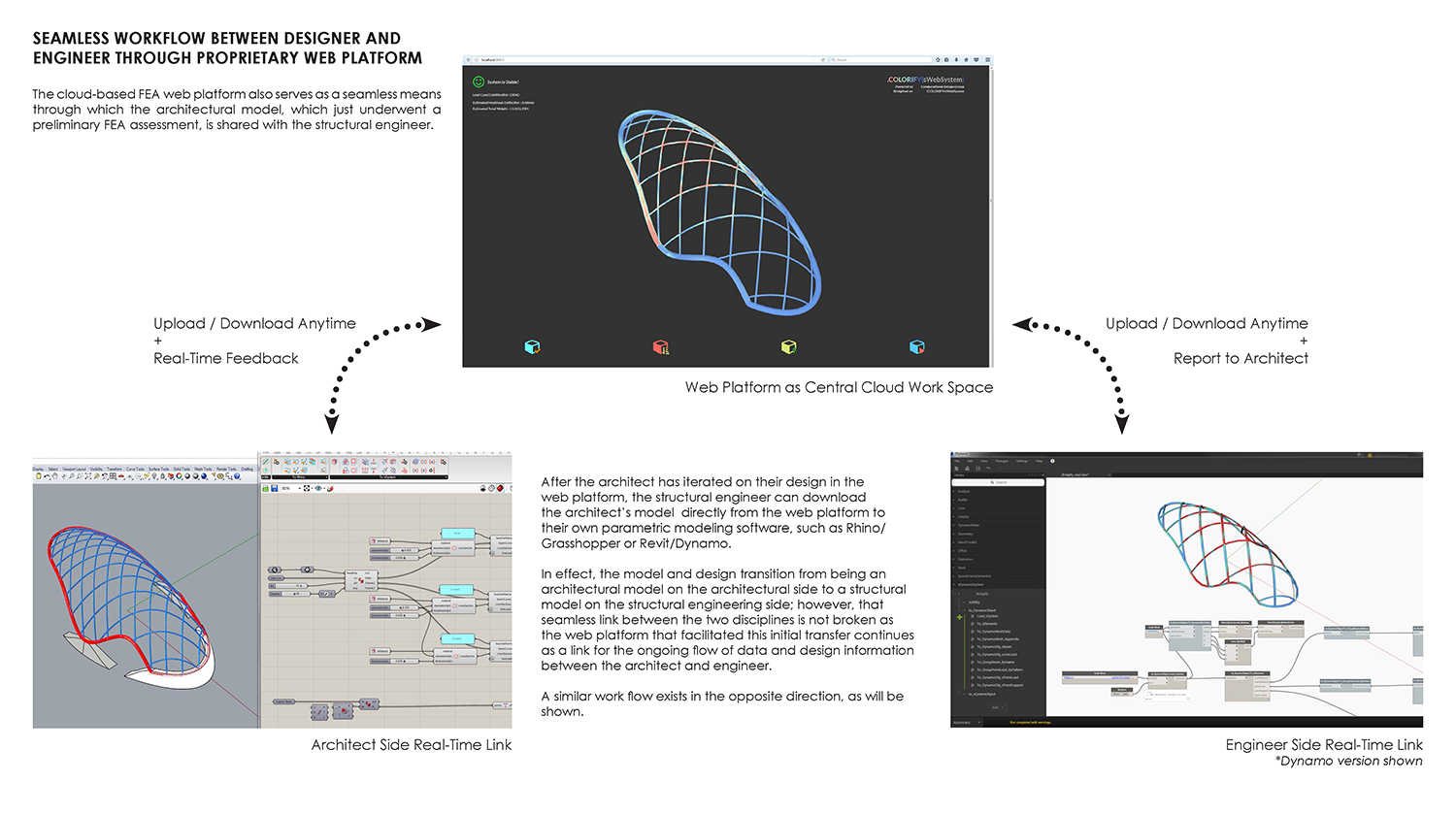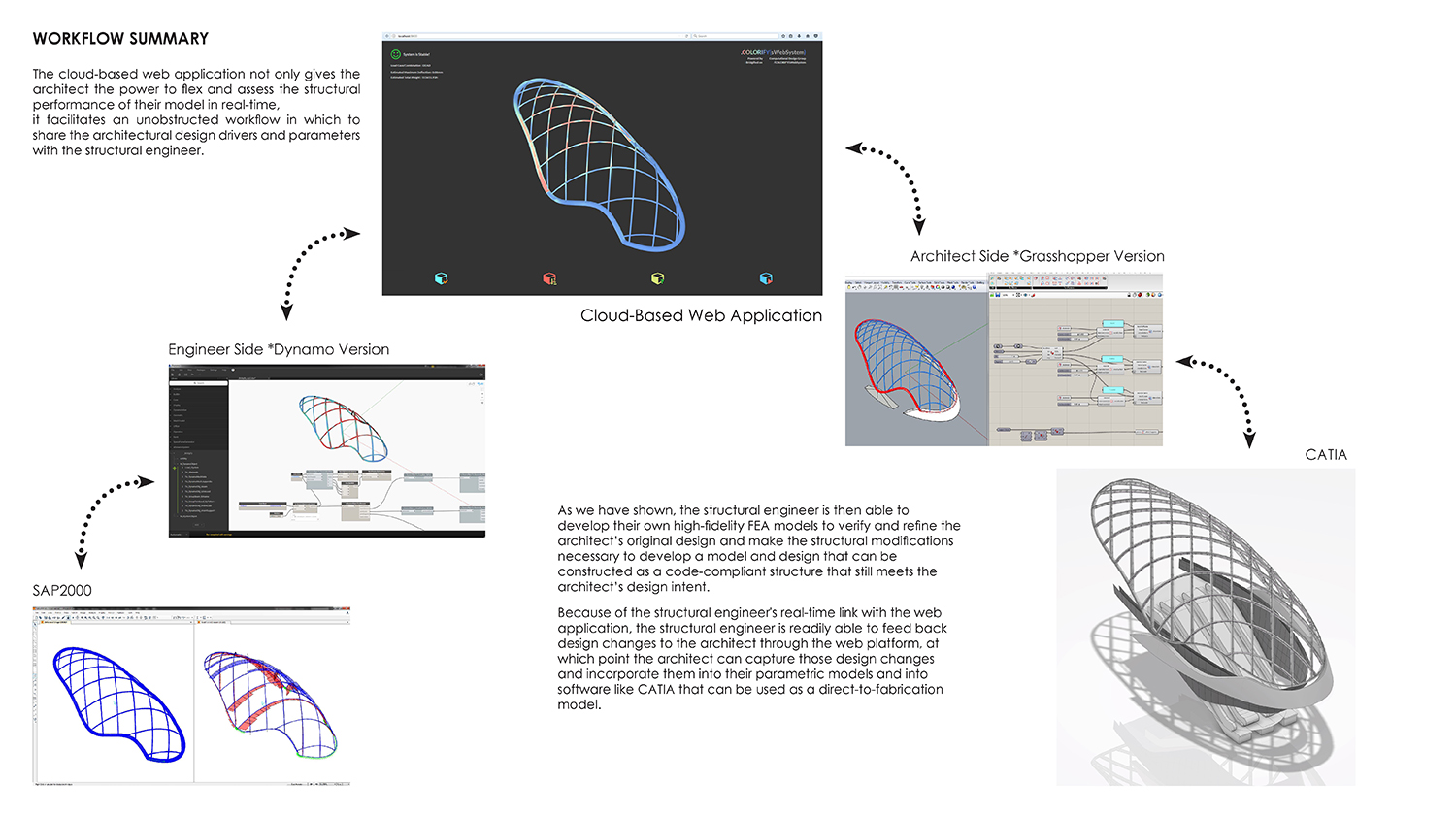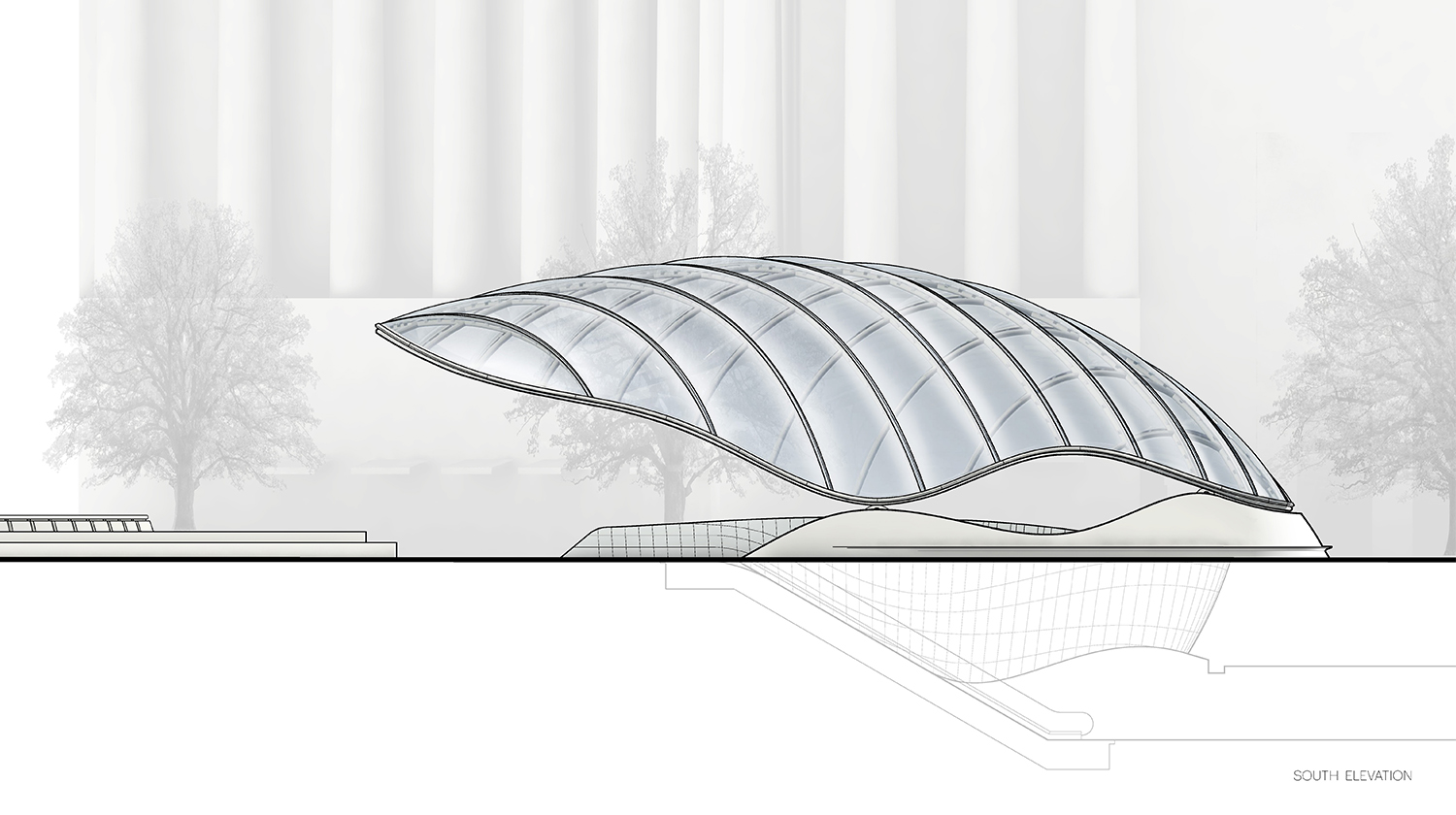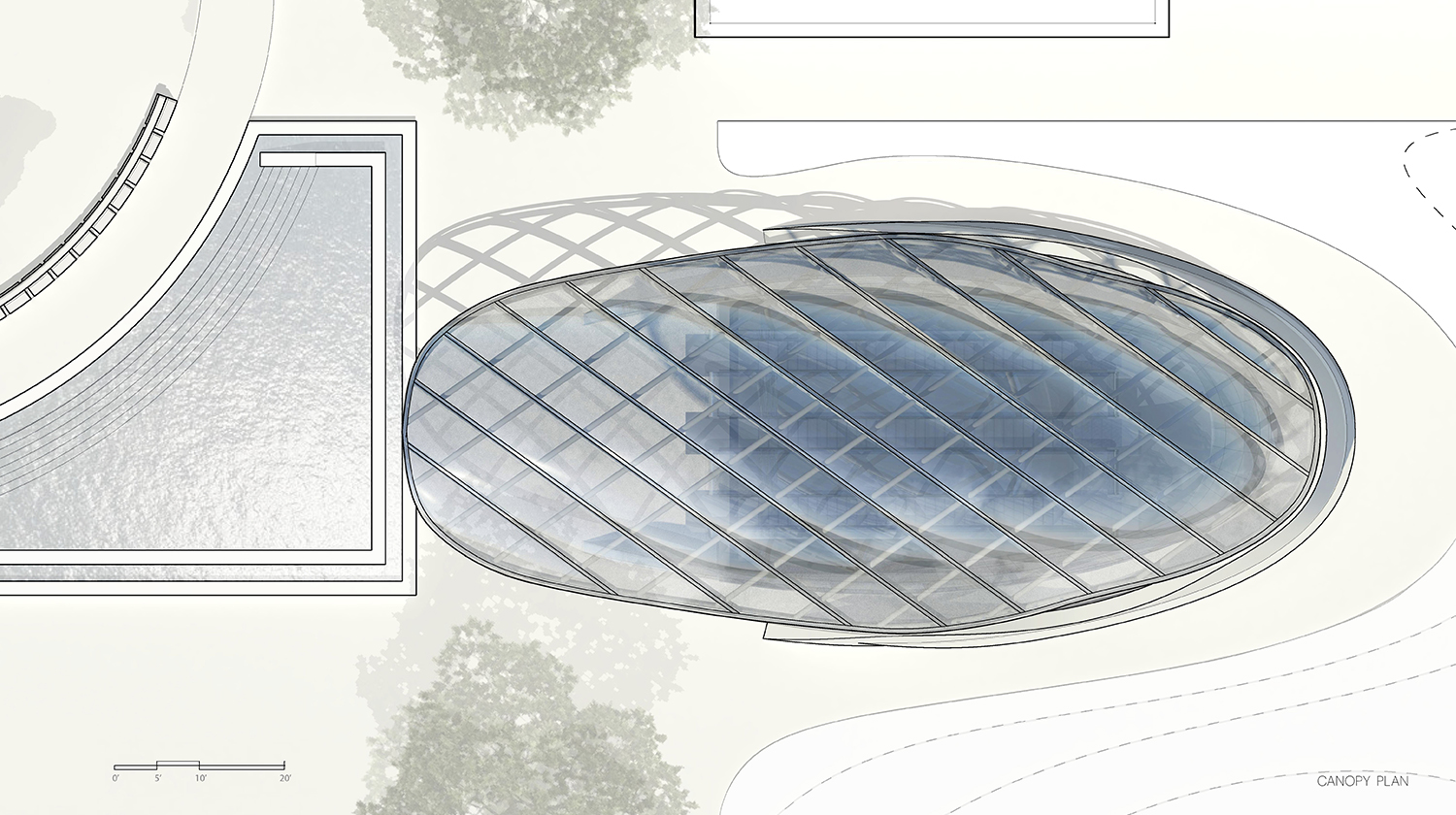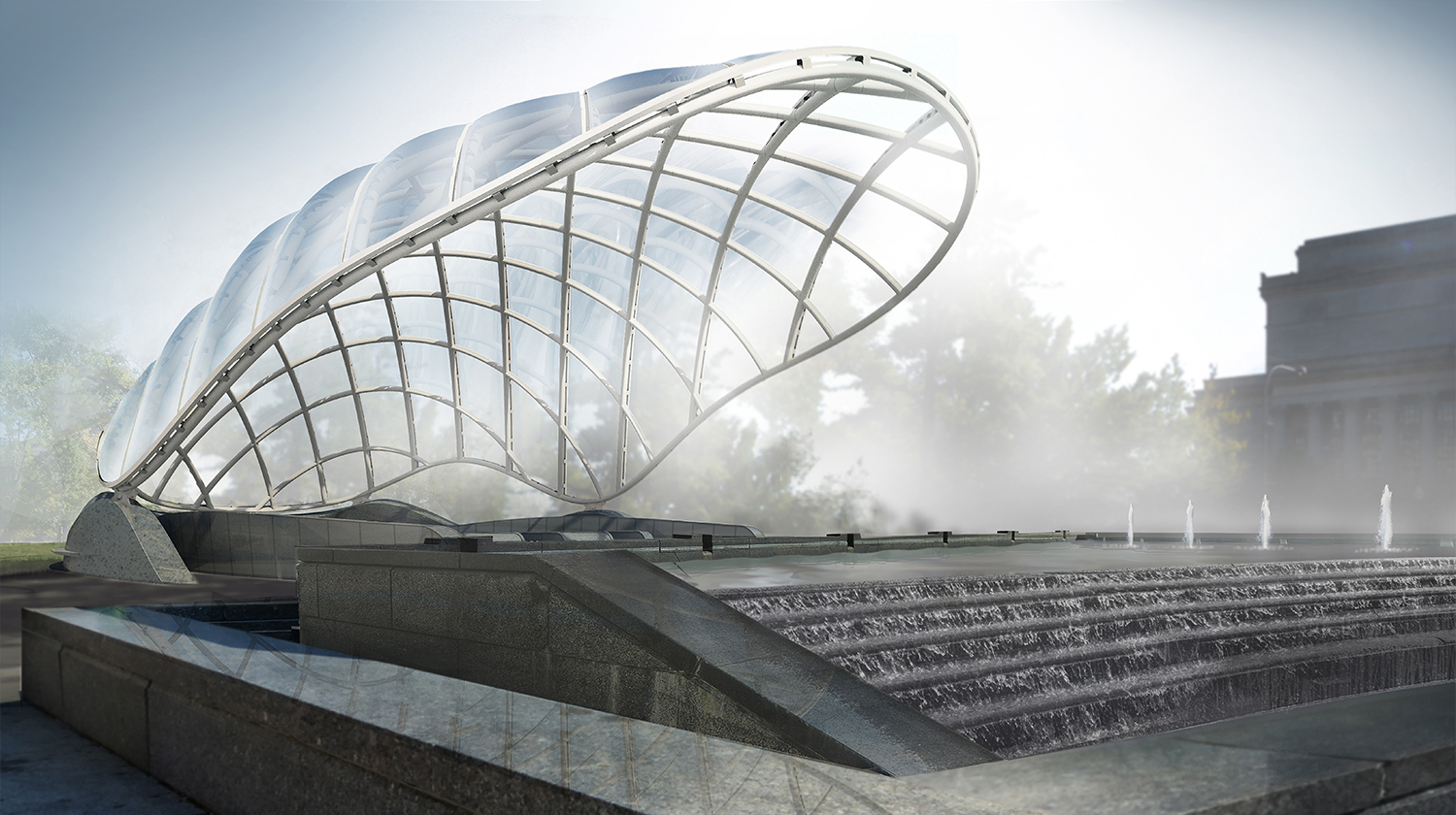
Pavillon de l'eau
Washington DC, USA
Typology: Transportation
Status: Concept
Credit: HKS
Pavillon de L’eau was developed as part of the HKS Design Fellowship together with Kevin Vandeman as a design proposal which integrated a unique design methodology using Dassault Systemes 3D Experience platform provided by Zahner and concurrent engineering analysis provided by SGH Engineers. My role and responsibility for this project began with the idea to investigate new computational design technologies being introduced to the AEC industry. I was an early adopter of the CATIA cloud-based platform and its various capabilities with professional project experience gained during my time working for Gehry Partners and Technologies. Responsible for this research effort, I worked directly with our partners at Zahner, Dassault Systemes, and SGH. My role included researching computational modeling, scripting techniques, 3D modeling, design analysis, and authoring research reports. The final outcome included a detailed parametric 3D model (in CATIA 3D Experience) for fabrication, research conference presentations, and publications.
Introduction
The Metro Gateway canopy Pavillon de L’eau is situated at the site of the United States Navy Memorial, adjacent to the National Archives in the heart of Washington, DC. The canopy cantilevers over the metro entrance providing a landmark and shelter from the seasonal variations in weather. The form is designed with the intent of maximizing structural performance in response to wind, rain, snow, and gravity loads. The site’s memorial was first proposed during the planning of the District by the French-born American architect Pierre L’Enfant which honors all past and present personnel of the Navy, Marine Corps, Coast Guard, and Merchant Marines. At its center, the memorial plaza is flanked by a series of cascading pools and fountains, creating a unique micro-environment. This design seeks to encapsulate the spirit of the memorial while providing a prominent gateway to and from the site. The form draws inspiration from marine technology and the legacy of marine engineering. The canopy design attempts to establish an interplay between fluid form, structure, and transparency. The complex geometry of the canopy is constructed out of primary and secondary steel tube sections with steel supports coordinated along each primary section which hosts the membrane support profiles. The ETFE steel support elevates the membrane up from the primary and secondary structure, amplifying the visibility of the complex arrangement.
The constructability strategy behind this design uses an advanced parametric methodology which maps design information continuously with parametric control through each system level. The parametric design approach applies Dassault Systemes 3D Experience which synthesizes design, geometric, analytical, and fabrication data into a single integrated model. This provided the ability to isolate and develop model elements at a high level of detail, establishing and maintaining parametric relationships across the entire design. Model elements, EKL scripts, and geometries are stored, classified, and processed in the cloud, making retrieval of information a search operation, removing the sorting procedure entirely from our design process. The design geometry was developed through input elements, contextual relationships, and discrete parametric values. This unique methodology required the design process to be analyzed from a distance and that we develop a strategy for binding the canopy design holistically as a parametric and automated system.
Design Integration
The skeletal design methodology within parametric design applications has the potential to drastically reduce the time it takes to go through design iterations. When designing a project with large amounts of detailing and assemblies, using skeletal modeling as a framework for developing detailed elements allows the designer to go into any generated components or part without affecting the entire system. The flexibility of using skeletal modeling can be seen in how the structural steel members for Pavillon de L’eau were created. The skeleton for all elements was scripted using a knowledge pattern with variables and constraints that were adjusted over a hundred times before arriving at the final solution. The wireframe functioned as a skeletal framework for modeling subsequent elements, generated using additional knowledge patterns, engineering templates, and action scripts which together provided the flexibility of iterating through numerous solutions.
Digital Design
The cloud-based tools used for this workflow enable the sharing of information and a collaborative atmosphere that is highly accessible and easily shared during the design engineering process. This working model produces a high level of engineering resolution, design intention, and analytical flow that can translate all the way through fabrication. The feedback loop between the architect and engineer is made increasingly effective through a cloud database for sharing model information. Design drivers together with a computational framework allow design changes to propagate all the way through detailed components. The same design drivers are also used for analytical purposes and the finite element analysis (FEA) data is then fed back into the system for maintaining a high degree of continuity between disciplines.
This workflow includes custom Grasshopper components that set up a link between the design model and the proprietary web application. The web application empowers the design process with a built-in finite-element engine that enables real-time feedback on structural performance. In this case, the parametric geometry is imported from the CATIA model into a Rhino/Grasshopper-based platform. The structural performance and feasibility of the architectural Rhino/Grasshopper model can be characterized and evaluated using the linked cloud-based web application.
Engineering Integration
The structural investigations with SGH began by taking the design drivers directly from CATIA and running them through multiple simulation techniques. The ability to parameterize a structural model and rapidly iterate on multiple geometric configurations based on a myriad of design drivers is only as valuable as the accuracy of the finite element model and its embedded assumptions. In addition to meeting aesthetic goals, the structure must be safe, perform appropriately under service levels loads, and be made constructible. The structural model was developed as a center-stick finite element analysis (FEA) model using SAP2000. This application is a robust FEA platform used for a range of structural engineering analysis and design applications including but not limited to high-rise buildings, long-span trusses, space trusses, and tension-integrity structures, nuclear structures, concrete-shelled structures, nonlinear performance-based seismic analyses, and much more. The curved structural steel tubes were modeled in SAP2000 as discrete 1-d frame elements. One of the many strengths of SGH’s in-house program is its ability to rapidly discretize complex geometric information and make it compatible with a finite element program. For instance, the curved steel tubes were discretized into multiple straight elements to form the curves of the intersecting tubes. Because of the thin profile of the pavilion, it was necessary to take advantage of all sources of potential rigidity in the members and connections to limit deflections and improve the overall performance of the structure. With this in mind, the connections at the intersections of the “primary” and “secondary” frame elements were modeled (and detailed, as will be discussed later) without flexural releases, which resulted in framing members that behave as continuous elements through the intersecting nodes. The expectation that the frame elements are fully continuous from one side of the pavilion structure to the other side, enabled SGH to take advantage of the additional flexural stiffness that was critical in helping to improve the deflection limits of the structure. The choice of round tubes as the primary structural members for the pavilion framing was in part driven by the suitability and advantages such members offer in the analysis of a structure like the one in this pavilion, which is continuously curving in multiple directions at the same time (e.g. Double-curved). Because the structural analysis and design properties of round tubes are equal in all directions—effectively, the mechanical properties are “isotropic”—the orientation of the member local axis does not have to be continuously rotated along the curving surface, and the model can be more rapidly constructed and analyzed. Furthermore, typical steel design considerations like flexural instabilities (i.e. Lateral torsional buckling), which are primarily controlled by the unbraced lengths of the members, do not control the design of round tubes. It made analyzing and designing the members far more expedient, and more importantly, allowed for greater flexibility in determining the spacing of the frame lines. By modeling the etfe as flexible shell elements, we enforced the expectation that the etfe does not act compositely with the steel structure and does not affect the structural properties. The etfe shell structure in conjunction with the closely spaced mesh points along the steel frame elements meant that distributed loads, such as snow and wind loads, were distributed to the steel frame elements uniformly and based on tributary areas.
Structural Life Cycle Analysis
LCA analysis was conducted on primary and secondary steel. We began by first looking at the production processes of steel, including the mining of fresh materials and the reuse of recycled materials since the majority of steel is made from recycled materials. About 70% of all steel production in the world is made from recycled material. The energy requirement and CO2 emissions generated from melting, casting, and fabrication methods for steel is an important factor to consider. The total steel for the primary and secondary structure had a Mass of 13, 078 KG with 6,280 KG for the secondary members and 6,798 KG for the primary members. With a primary material production energy demand of between 25-28 MJ/KG, a CO2 footprint of between 1.7-1.9 KG/KG, and water consumption demand of from 43-48 L/KG. The material processing stage and recycling strategies also looked at this criterion (Energy, CO2, and Water). This made it clear that stainless steel provided the best combination of solutions vs other steel types including galvanized steel and painted steel. These other solutions also required additional steps for both galvanization and painting, since these coating systems required more processing, they also added more cost. Galvanization added $1.10 per sq. ft while IOZ/Epoxy/Polyurethane coating systems added $3.36 per sq. ft. The galvanization of steel adds 30.5 MJ/KG while a coating system adds 83.2MJ/KG. The structural performance, durability, and corrosion resistance together with a deeper understanding of the life cycle implications made clear the subsequent steps necessary to coordinate other factors that would affect the entire canopy system. Including the number of welds required to maintain the performative qualities of this material and the finishing qualities that should be specified during manufacturing and fabrication. Life cycle analysis technology alone won’t make things clear, but using the information provided helped us establish relationships between material processes and their impacts on the overall design.
